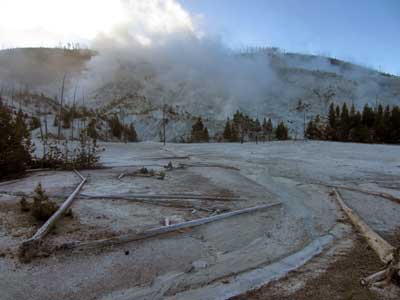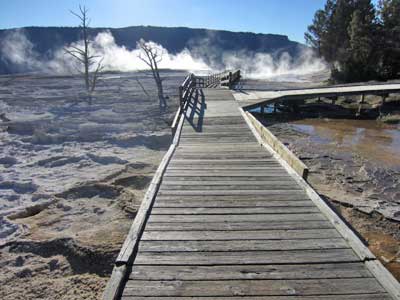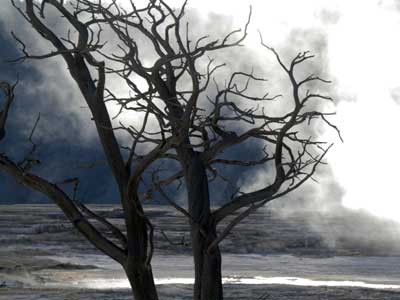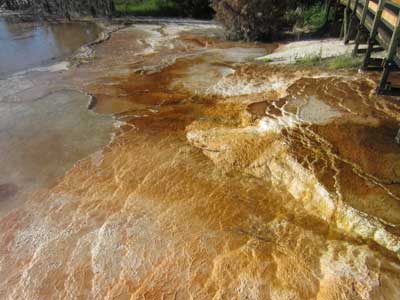MAMMOTH SPRINGS (Day 5 - part 1)
Again I awoke in a frosty, icy tent. I packed up and headed out early. Fog mixed with geothermal steam on the road.




Fumaroles let off steam on Roaring Mountain (right).
I didn't have a lot of time at Mammoth Hot Springs since I had a long drive ahead of me, so I only explored the Lower Terraces. The first trail took me to the upper levels.

Map of the lower terraces (click for a larger view)


The walkway... and Jupiter Spring, which has been dormant since the mid-1990's.
A hot spring may become dormant at any time for days, months or even years. If Jupiter Spring remains so, eventually it will again become covered by soil.

Mound Terrace was also dry.




An active spring
Heated deep underground, water rises through buried limestone, then deposits the mineral calcite above ground. The calcite hardens, becoming travertine. Thermophiles, heat-loving microorganisms create the wide range of colors. Some live on sunlight; others live on gasses such as hydrogen sulfide.



The top level:


New Blue Spring










Canary Spring (right)






A Killdeer (a type of large plover) walks the water's edge.


I took a different path back down, which led me along the middle level.

Cleopatra Terrace


Hot springs are a constantly changing phenomenon. ... Overlooking Palette Springs


Minerva Terrace
return • continue